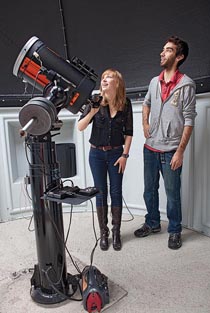When universities work as hard as students
Anyone born in 1991, the year Maclean’s produced our first University Issue, may have already finished an undergraduate degree by now, or may be in their final year. Certainly a lot has changed since then: on campus and on these pages. Everyone has grown up.
Photograph by Jessica Darmanin
Share

Anyone born in 1991, the year Maclean’s produced our first University Issue, may have already finished an undergraduate degree by now, or may be in their final year. Certainly a lot has changed since then: on campus and on these pages. Everyone has grown up.
Over the past 22 years, our annual University Issue has gone from a first-of-its kind ranking of post-secondary institutions to an irreplaceable tool for Canadian students and their parents making the single biggest decision of a young person’s life. We have expanded significantly over the years, adding new surveys, correspondents and reams of easy-to-use data. We’ve also established a hefty online presence that includes a personalized ranking feature and other tools.
And yet the biggest changes have been going on at the schools themselves. There are currently over a million full-time and part-time students enrolled at Canadian universities, and their choices have never been greater.
More than ever, universities are attuned to the demands of students and their families. Want more specialized undergraduate options? A less impersonal classroom experience? Better-tasting, ethnically diverse and more convenient food? A safer campus? Top-flight athletic amenities? It’s all out there if you know where to look. (Hint: you’re holding it in your hand right now.)
From an academic perspective, one of the most interesting trends is the undergrad-friendly move to small-class programs with an emphasis on greater student engagement at some of Canada’s largest universities, such as Science One at the University of British Columbia or the University of Western Ontario’s new School for Advanced Studies in the Arts and Humanities, which opens next year. Of course that small-class feel is also still available at small universities, such as Acadia University in Wolfville, N.S., or tiny Quest University in Squamish, B.C. (See “Is big bad and small good?” page 36).
There’s just as much change going on outside the lecture halls. Universities are working hard to reduce the risks of excessive drinking, for example. Queen’s University in Kingston, Ont., now operates a Campus Observation Room as a safe place for students to sober up. Schools are also making an effort to cut down on campus crime and other sources of student frustration. And boring cafeteria food is definitely a thing of the past. Sustainable, locally sourced or halal meals are all on offer at campuses across the country; food diversity has becomes the new menu focus.
Finally, many schools’ athletic amenities have improved tremendously from the gloomy, sweaty weight rooms of long ago. Stunning new facilities that rival the best private gym clubs are popping up around the country: universities now boast climbing walls, rowing tanks, field hockey pitches and the best exercise equipment. All this competition is an effort to lure new students.
With such a boggling array of attractions, sales pitches and inducements before them, how should prospective students proceed?
First stop, obviously, is this magazine and our On Campus website (see macleans.ca.) Take a look at the charts on average class sizes, spending on libraries, student services, scholarships and bursaries, graduation rates and where students and faculty are winning the most awards. Figure out what matters most to you. Then check individual university websites, tour campuses, look inside classrooms, gyms and residences, eat a meal or two and talk to the professors.
Keep in mind, however, that there’s no single “best” university or college in Canada. Rather, your target should be the “best school for you” based on your own personal preferences, interests, abilities and educational goals. It’s out there. You just have to find it. We’re happy to help.